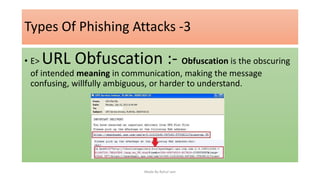Link Wrapping Gone Wrong: Phishing Attacks Exploit Security Services

Link Wrapping Gone Wrong: Phishing Attacks Exploit Security Services
In a disturbing turn of events, threat actors are now exploiting legitimate link wrapping services, such as those provided by Proofpoint and Intermedia, to mask malicious links in phishing campaigns. This sophisticated technique allows attackers to bypass traditional security measures and trick unsuspecting users into divulging sensitive information.

Phishing attacks, Types Of Phishing Attacks, How To Avoid Phishing Attacks | PPT
How Link Wrapping is Being Abused
Link wrapping is a security feature designed to protect users by scanning URLs before they are accessed. Services like Proofpoint and Intermedia rewrite URLs in emails, routing them through their servers for analysis. While this is intended to identify and block malicious sites, attackers are now using these same wrapped links to hide their phishing payloads.
The multi-layer redirect tactic involves:
- Sending an email with a wrapped link from a reputable service (e.g., Proofpoint, Intermedia).
- The wrapped link redirects to an intermediate site.
- The intermediate site then redirects to the actual phishing page, often designed to steal Microsoft 365 credentials.
The Impact and Implications
This abuse of link wrapping services has significant implications for cybersecurity:
- Bypassing Security Measures: Traditional security tools may trust links from reputable services, allowing malicious emails to reach users' inboxes.
- Increased Credibility: Users are more likely to trust links that appear to be from a known security vendor.
- Difficult Detection: The multi-layered redirection makes it harder to identify the true destination of the link.
Protecting Yourself and Your Organization
While the situation may seem dire, there are steps you can take to protect yourself and your organization:
- Employee Training: Educate employees about the risks of phishing and the importance of verifying links, even if they appear legitimate.
- Advanced Threat Protection: Implement advanced threat protection solutions that can analyze the behavior of links and detect malicious redirects.
- Multi-Factor Authentication (MFA): Enforce MFA to add an extra layer of security to user accounts.
- Email Security Awareness: Use tools that analyze email content for phishing indicators, even within wrapped links.
Key Takeaways
The abuse of link wrapping services by threat actors represents a concerning evolution in phishing tactics. By understanding how these attacks work and implementing appropriate security measures, you can significantly reduce your risk of falling victim to these sophisticated campaigns. Stay vigilant, stay informed, and prioritize security awareness training to keep your organization safe.




